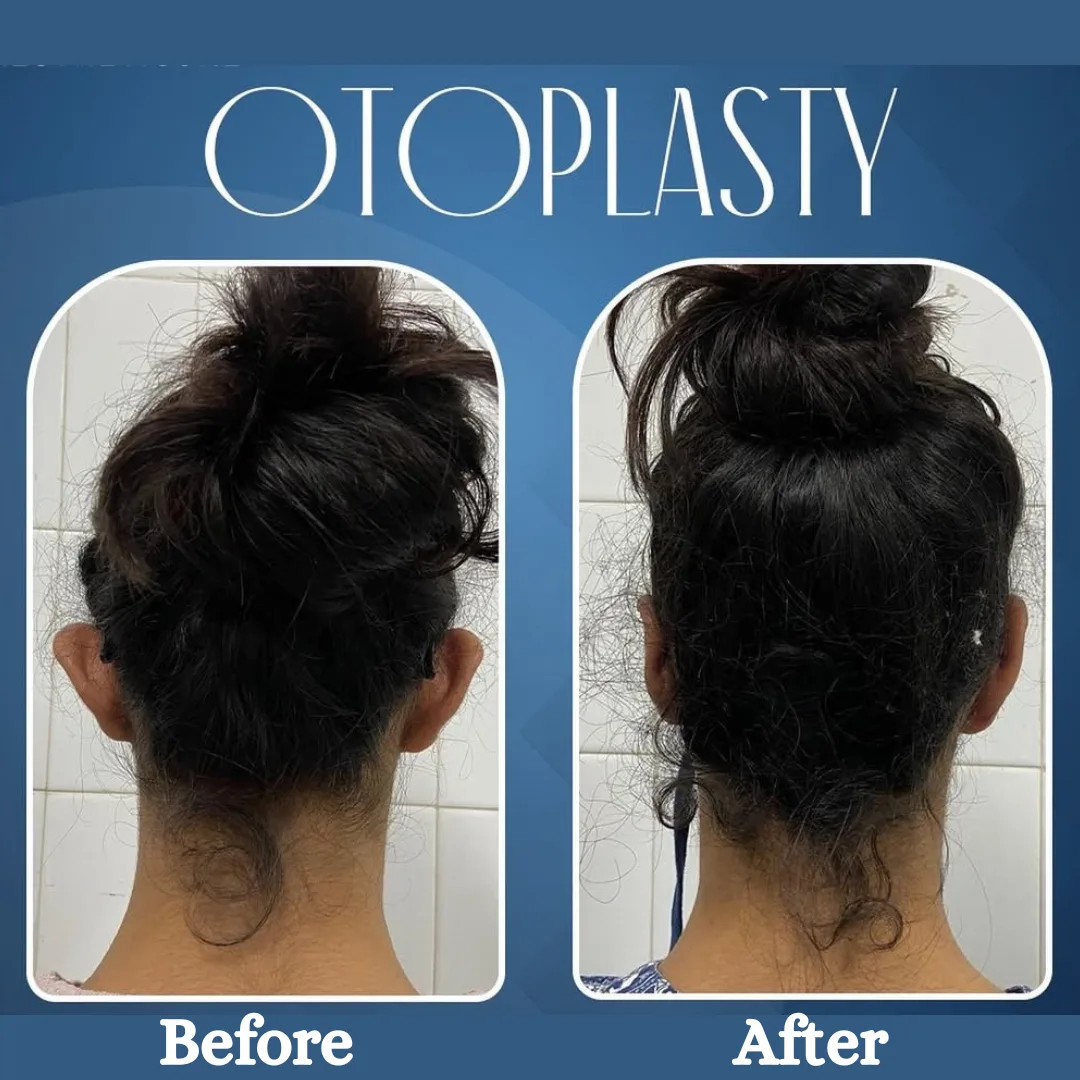Otoplasty, also known as ear reshaping or ear pinning surgery, is to enhance the appearance of the ears by cosmetic surgery. The shape, size, and symmetry of the ear are important components to overall face harmony, however they often get overlooked in the facial aesthetics. Many people, including adults and children, use otoplasty to treat injuries, genetic asymmetry, or prominent ears.
In this blog, we will discuss otoplasty, how it works, benefits, risks, and tips to get the best results.
What is Otoplasty?
A surgical treatment called otoplasty corrects abnormalities of the ears to give them a more natural and attractive look. It provides an effective solution for issues such as congenital abnormalities, asymmetry, or excessively prominent ears. The procedure is frequently done on people who are embarrassed about the size or shape of their ears or on children older than five. Its purpose are:
- First, minimizing pronounced ears
- Next, correcting the imbalance in ears
- In addition, making ears that are deformed or misshapen better
- Ultimately, improving the harmony of the face generally
How Does Otoplasty Surgery Work?
Since otoplasty is often done as an outpatient treatment, patients can return home the same day. Here’s detailed explanation of how ear reshaping surgery operates:
Step 1: Anesthesia
For adults, the procedure can be done under local anesthetic with sedation; for children, it can be done under general anesthesia. Anesthesia provides a painless and comfortable procedure.
Step 2: Incisions
Usually, the surgeon creates an incision behind the ear to cover up scars. In some cases, if cartilage transformation is necessary, small incisions are performed on the front of the ear.
Step 3: Reshaping the cartilage
The surgeon carefully reshapes the ear cartilage after making the incision. Techniques might consist of:
- Folding and suturing: To push the ear closer to the skull and provide a natural fold, permanent sutures are utilized.
- Trimming excess cartilage: Small portions of large or asymmetrical cartilage may be removed.
- Ear position adjustment: The ear is positioned to attain proportion and symmetry with the face and head.
Step 4: Closing the incisions
With tiny stitches, the wound is sealed. The incision is made behind the ear, so scars are often well-hidden and gradually disappear.
Step 5: Dressing and bandage
To maintain the new form and reduce swelling during the early healing procedure, a protective dressing or headband is placed over the ears.
Who is a Good Candidate For Otoplasty?
The ideal otoplasty candidate has good cartilage, no health issues, and realistic expectations. Planning for surgery depends on the kind of deformity, age, and general health.
Children
- It is often advised once the ears have fully matured, which is about age 5–6.
- Harassment and problems with confidence can be avoided with early correction.
Adults
- At any age, ear cartilage may be effectively reshaped since it is still flexible.
- People frequently look for asymmetry repair or cosmetic improvement.
Health Problems
- People who suffer from severe skin diseases, uncontrolled diabetes, or bleeding issues could require further testing.
What are the Risks of Otoplasty?
It is generally safe and effective but there are some risks just like with other surgery:
- Firstly, infection at the area of incision
- Secondly, small amounts of bleeding or hematoma development
- Additionally, temporary numbness and tingling
- Moreover, visible scars that are generally disappear over time
- Finally, a reaction with anesthesia
What is the Cost of Otoplasty?
The cost of otoplasty depends upon:
- The surgeon’s level of experience.
- The geographic location of the clinic.
- The type of anesthesia used.
- The facility fees and post operative care provided.
Otoplasty is usually considered as a cosmetic beauty procedure and unless it is done for reconstructive purposes, medical coverage may not cover it.
Conclusion:
It is a very safe and successful surgical procedure for those who want to make their ears seem better. It can improve face harmony and increase self-confidence by addressing congenital abnormalities, asymmetry, or large ears. Natural and long-lasting effects can only be achieved by carefully choosing a qualified surgeon, understanding the healing process, and following post-operative instructions. If you are considering ear reshaping surgery, then please visit Aestheticure. Our best expertise and experienced surgeons will provide you with the best treatment and proper care and also they will guide you through the procedure, provide you with thoughtful, honest answers to all of your questions. For more information or to schedule a consultation, feel free to Contact Us!







